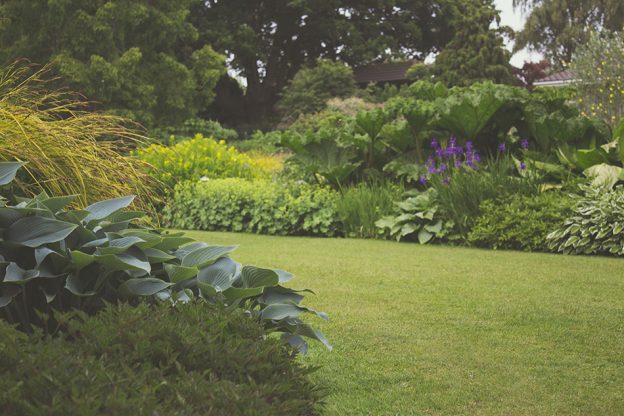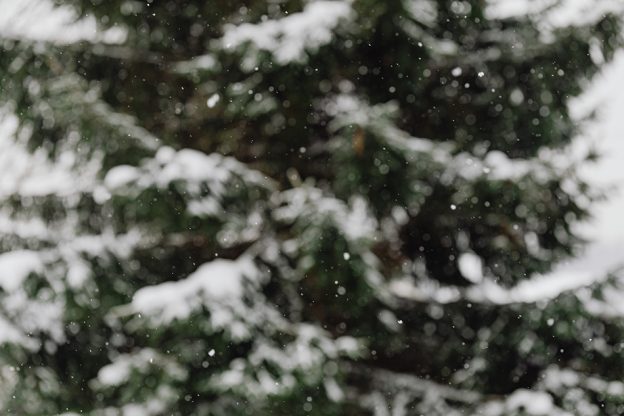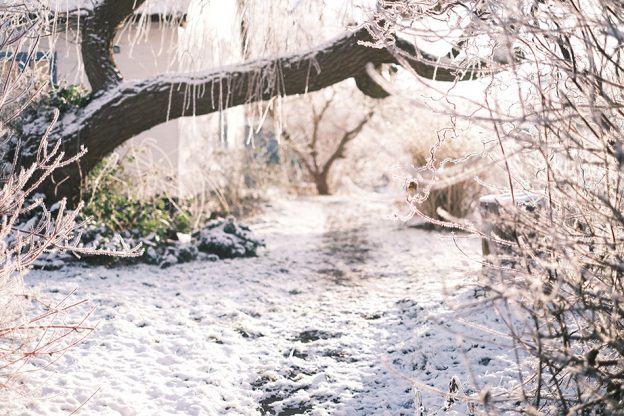If you are looking for a reason to spend more time outside, giving your backyard a makeover could be the perfect incentive. Most American backyards are underused, but a bit of landscaping is often enough to lure people outside for their rest and relaxation.
One of the best ways to improve your outdoor space is by adding a fire pit. We will give you a few key backyard fire pit ideas for Chicagoland homeowners. With the right fire pit design, you can create the ultimate outdoor space for friends and family in your backyard.
If you are not sure where to begin, here is some inspiration with our fantastic landscaping tips.
Simple Brick
When you start talking about fire pit design, getting carried away is easy. If you just want something simple and clean, build a round brick fire pit with brick that matches your home.
These types of fire pits look good anywhere in the backyard, but allow you to keep a cohesive appearance with your home and backyard landscaping. The best part about a sturdy brick fire pit is the price tag. They are easy to build and the materials will not break your budget.
Fire Pit Pathway
If you have a spacious backyard, take advantage of the space by creating a separate fire pit area away from your home or patio. This can provide extra privacy or a cozier place to relax in. Add extra landscaping appeal by creating a pathway leading to it. You will have the opportunity to use a variety of materials that appeal to you – step stones, landscaping lights, arbors, etc. – to create your pathway.
Modern Patio Pit
People have been gathering around the hearth since we discovered how to use fire. It can be a temptation to take the rustic approach to the fire pit because of this, but it is unnecessary. If you’ve got a beautiful modern home, you’ll probably want a modern fire pit to go with it.
There are all sorts of handsome fire pits and tables to choose from that contribute to a modern backyard aesthetic. A lot of these are connected to your gas line or a propane tank, so you don’t have to worry about buying wood and starting fires. You will have them on demand when guests come around.
Fire Pit Landscaping
When you have an amazing landscaper at your disposal, you should take every opportunity to use their expertise. You can do a lot of landscaping around a fire pit to give the space the feel of a gorgeously designed room outdoors.
You can use a mixture of materials to achieve an amazing effect. Using paving stones and gravel around your fire pit can give it a casual yet nicely textured look. Around that, you can create a small stone wall that doubles as a planter for a combination of perennials and annuals.
Keeping It Rustic
As we mentioned above, there is something about a fire pit that makes you want to go for the rustic look. You can take numerous routes with rustic fire pit design, but what’s better than a simple circle of stones on top of a circle of gravel?
All you really need is enough room to put some Adirondack chairs around the pit and you’re done. It is a laid-back feel for those wonderful Chicago land summer nights with friends and family all around.
Family Hearth
Having a fire pit in your backyard is the perfect excuse to hold more family gatherings this coming summer. When you are inviting the whole family over, however, you better make sure you have enough space around the fire. You will also need a fire pit big enough to keep everyone warm.
For these types of fire pits, it is always good to keep them close to the house, right on the patio. This makes it easy for people to go in and out of the house as needed and you will be closer to the barbecue. All you really need to do is create an extension off the patio and install a fire pit big enough for everyone to gather around.
Build Into the Wall
If you have stone-walled planters in your backyard, you can integrate the fire pit right into one of them. This gives the fire pit the look of a traditional fireplace and allows you to enjoy your garden as well as a nice hot fire.
Building the fire pit into a wall also gives it a natural wind barrier. It is a great choice for smaller yards to maximize your space.
A Natural Look
Some homeowners really want their backyard spaces to feel like a part of nature with lots of flowers, trees, and garden planters. You can simultaneously seclude your fire pit and implement native plants by surrounding the fire pit with trees and shrubbery.
You will get the privacy that the plants create, but you’ll also get that sense of calm that comes from being around plants.
Sunken Fire Pit
Most people decide to build up out of the ground with their fire pits, but you can dig down just as easily. If you do not want your fire pit on show all of the time, this is a great option.
By using similar landscaping features all around the fire pit, you can almost hide it from view. Enhance it further by building a matching cover for it so you can unveil the fire pit when guests come over.
Getting Inspiration from Backyard Fire Pit Ideas
These are just a few backyard fire pit ideas that we have implemented to great effect. You can use them as inspiration to create something completely unique and all your own.
Backyard landscaping can be overwhelming for most Chicagoland homeowners, whether you are talking about planting foliage or installing fire pits. Having an expert landscaper help you take your ideas and bring them to fruition is a real game changer.
At Martin John Company, we have been providing northern Chicagoland homeowners with landscaping services since 2001. From Evanston to Lake Forest to Libertyville to Barrington, we can help you with all of your landscaping needs. To start talking about your new fire pit designs with one of our helpful designers, contact us today.










